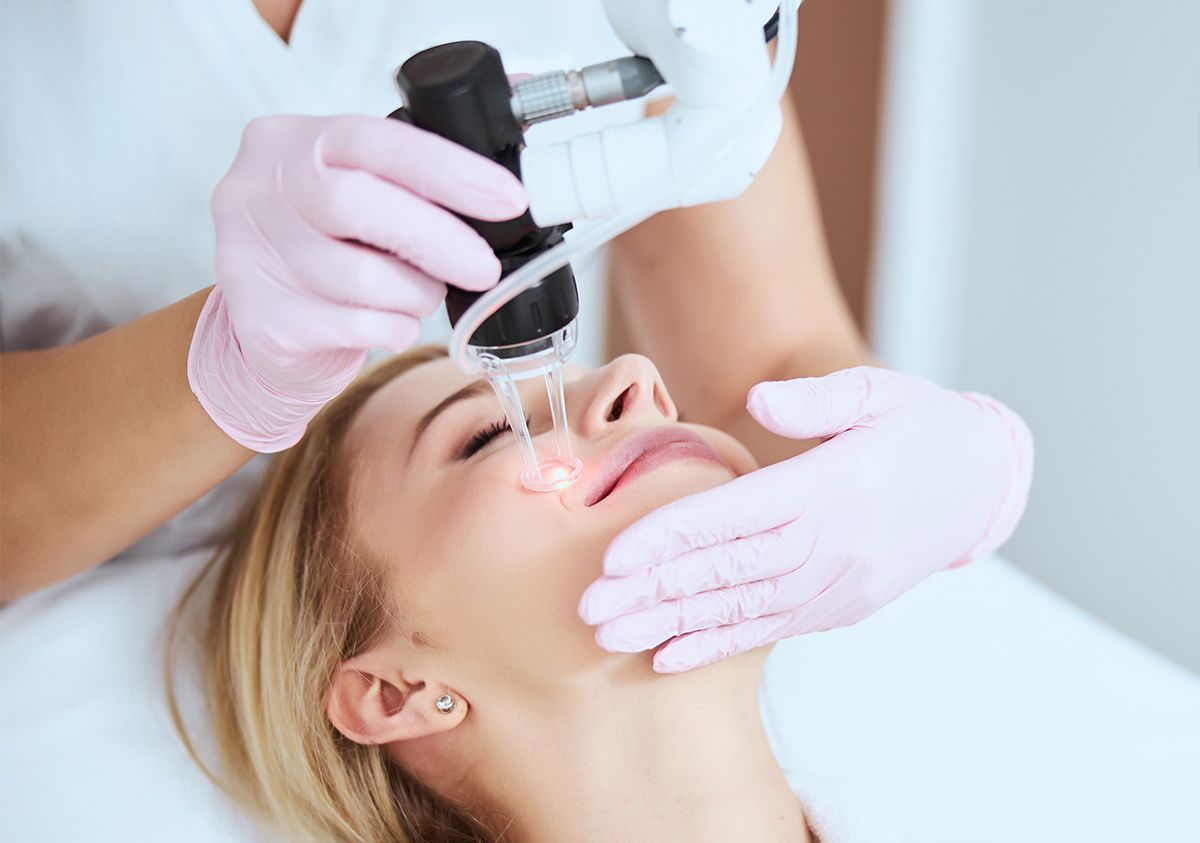
Fractional carbon dioxide lasers have a wide range of dermatological uses. The reason is that despite it causes very little damage on the skin surface, it reaches the desired depth under the skin and initiates the desired skin resurfacing process. Thus, it is most commonly used in the treatment of wounds, burns, acne, surgical scars, incision scars, skin fractures, and thin and thick wrinkles and sagging of the skin.
It shows effect via the selective photothermolysis mechanism, as in the working principle of every laser. The target chromophore is water. Very small doses, that are divided as fractional from the skin surface, are administered subcutaneously in columns at the same time. Although many laser lights are applied to the skin at the same time, it does not cause any significant damage to the skin surface as it is divided into many parts, leaving intact skin islets in between. Intact skin islets, on the other hand, provide a safe wound recovery process as they initiate tissue regeneration again. Worn collagen and elastin bundles, which are the cause of wrinkles and scars under the skin, are provided to be destroyed and resynthesised.
Fractional Co2 laser provides strong energy that is enough to penetrate to the deep layers of the skin. Thus, the upper part of the skin crusts and such crusts fall within 1 week and 10 days, and new skin comes from the bottom. Regeneration of the skin reduces the scars and makes the scars more compatible with the skin. In this way, the upper skin is peeled off and renewed, and the collagen in the region increases.
The success rate of scar treatment varies depending on the current scar condition. There is no change in the number or size of the scar in the treatment.
The improvement is occurs in the visibility, not the size of the scar. In other words, the prominence of the treated scar decreases and it becomes closer to the normal skin and more compatible.
The best result is formed when different treatments are combined. While Fractional Co2 Laser peels off the upper layer of the skin, different applications such as prp, mesotherapy and youth vaccine can be used to improve the quality of the newly formed skin.
Processes are applied in sessions and session intervals are 2 weeks on average. The number of sessions of which treatment will be applied varies according to the response of the person to the treatment. An average of 50% reduction can be achieved in 5-6 sessions.
Co2 Laser is not applied in summer if the scar marks (such as on the hand and face) are in an area where you cannot protect them from direct sunlight.
